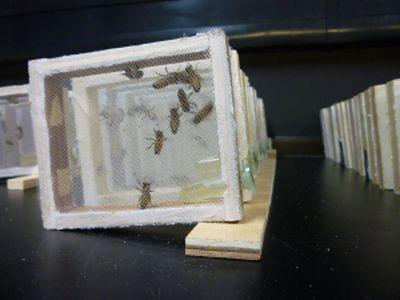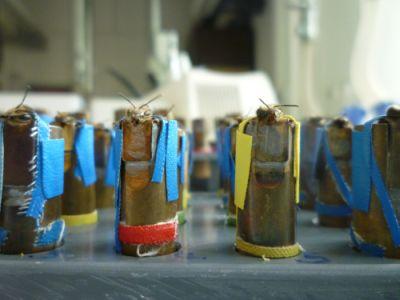Experiment 1 Activity levels, feeding rate and mortality
The bees were collected from four different hives and placed in small wooden cages, 10 bees each. The pesticide imidacloprid was provided ad libitum mixed with syrup. One hour after placing the bees into the cage, their activity was recorded for 1 minute. The bees' activity level was recorded on day 1 and 4. The bees' feeding rate and mortality were recorded every day until all the bees had died in the cage.

Experiment 2 Proboscis Extension Reflex
Foraging bees were trapped at the entrance of the hive and placed in small glass tubes. The bees were put on ice and placed in metal tubes where the body was restrained and the head was left protruded with the proboscis free. The bees were fed until satiated with sucrose and was then left to starve until the next day. The individuals which showed the proboscis extension reflex when touched on the antenna with sucorse, was used in the experiment.
The individuals were fed with different doses of imidacloprid one hour before testing. The bees were conditioned for three trials with sucrose and odour. After the last trial, 15 and 60 min passed before the bees were re-tested with only the odour to establish if they had built an association between odor and reward. If the bee extended the proboscis when only the odour was presented, this was recorded as indicating a successful association between the odour linalool and sucrose.

Responsible for this page:
Director of undergraduate studies Biology
Last updated:
05/19/11
